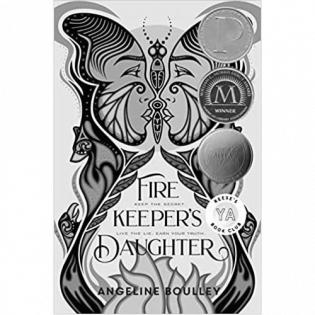The Firekeeper's Daughter Literature Guide
Keywords:
Culture
Identity
Native Peoples
Social Justice
by Angeline Boulley - A guide for teens, teachers, and group leaders to accompany the reading of this novel. The guide below provides activities and discussion questions to build youth understanding of themselves and their community, as well as explore the idea of identity and culture.
A story of cultural identity and belonging, Firekeeper's Daughter is suspenseful and smart. When Daunis loses someone close to her, she becomes deeply engaged in an FBI investigation of a drug that is tearing the Northern Michigan community apart. A clash between her father's Indigenous family and her mother's prominent white family causes Daunis to contemplate her identity and who to trust as she follows a hero's journey of suspense and heart-wrenching decisions. This book reflects deep love for the author's Ojibwe culture. While the book portrays very difficult topics for young adults - drugs, racism, murder, and rape - they are handled with compassion and respect for the characters and readers.
Discussion Questions
- The author said that books can serve as a mirror, a window, or a sliding door to help you understand your own identity and decisions. Which of these metaphors describes how Firekeeper's Daughter caused you to reflect on your own identity?
- This book is about a community that is not well represented in books and media. What are some things you learned about the Anishinaabe people and culture?
- Daunis fights to understand her identity and values. As she understands her identity, it acts as a shield to help her make difficult decisions. What are some ways young people come to understand their own identity and values? What are some words you would use to describe your own identity and values? How does understanding yourself provide strength and a shield for you?
- Daunis is careful not to betray her cultural community as she helps the FBI. What are some examples of making tough decisions to protect her culture and work for the good of all? Talk about times that you had to make tough decisions between acting for the good of all and protecting someone or something?
- There are many examples of intergenerational relationships in the book. The elders are interesting and strong, and they love all the young people, not just their own. How does Daunis interact with the elders in her community? What impact would it have on your life if you deliberately connected with people of all different ages? What could you do to build those relationships?
- Daunis strongly portrays one aspect of philanthropy by giving of herself to make the community stronger. Philanthropy is defined as "giving time, talent, ties, testimony, or treasure for the common good." What is one way you can or do give for the common good?
- The book explores some very unpleasant truths of our lives. Young people, like adults, must find their place in a complicated world. Choose one of the unpleasant truths from the book - microaggressions about skin color, dysfunctional relationships, drug use, racism, injustice - and tell why it is important or helpful to explore this in a young adult novel.
Activities
- The author said when she was growing up, it was hard to find books that accurately represented her Indigenous culture. Do the libraries you own or visit represent a variety of cultures and people? Exposure to diverse people and situations helps us become more culturally competent people. Use this guide to help you analyze a library for equitable representation.
- Write a story or poem about a significant event in your life. Share with your friends or community to help them understand you.
- It can be hard to move on from a loss. Write a journal entry that only you can read about moving through loss. How does Daunis inspire strength and decision-making?
- Make a music playlist with songs that represent your school or community culture.
- Listen to an interview with the author. These are available on the internet.
